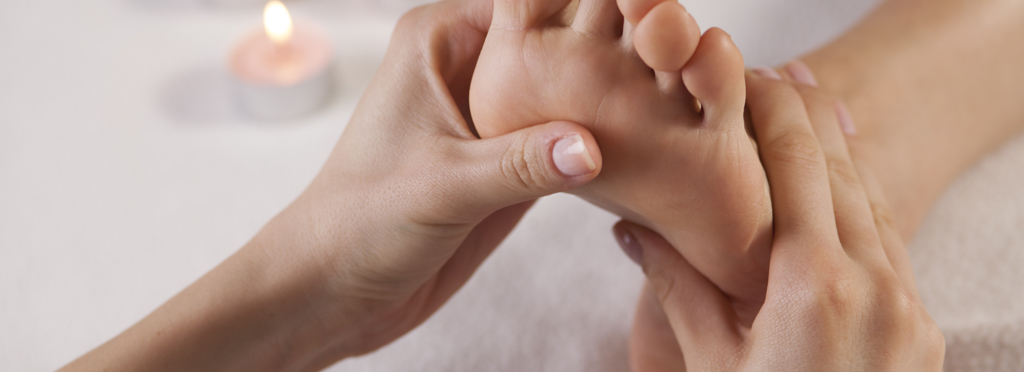
Reflexology. . .gives us the courage to move forward after years of standing still
What to expect from a reflexology session
Your first appointment will begin with a Wellbeing Review covering your general health, medical history, work/life balance and emotional well being. This information is treated with the utmost respect and so confidentiality is assured.
Reflexology is carried out while you are reclining on a couch. It starts with gentle relaxation massage followed by firm, yet gentle, thumb and finger pressure all over the feet.
During the session you may experience some discomfort at some reflexes but it is fleeting and is an indication of an imbalance and so these points will receive extra attention.
What you may feel after a Reflexology session
The effects of Reflexology are unique to each person. Most people experience a sense of well being and relaxation, others find it uplifting and energising. Very occasionally people report of feeling lethargic or emotional. This is transitory and should be seen as a positive sign that unbalanced energy is being readjusted and that the healing process has begun. It is important to make a note of any such changes and report back to me at the next session, as they indicate how your body is responding to the treatment
The benefits of Reflexology are cumulative, therefore a course of sessions is recommended. The total number of sessions and their frequency will depend on your bodys’ individual needs.
After completing a course of Reflexology many people find it beneficial to continue with regular fortnightly/monthly sessions to maintain a sense of well being.
The benefits of Reflexology for you
In their natural state our body’s enjoy good health. However, stress, negative thought, physical and emotional trauma, poor diet and poor colon health, knock them out of balance making them feel ‘ill at ease’.
Reflexology is a natural, non–invasive, holistic therapy practiced for over 5,000 years which is suitable for all ages. Sensitively applied it can also be beneficial to both mother and baby during pregnancy.
It can help:-
- relax
- improve mood
- aid sleep
- relieve tension
- improve a sense of well being.
Reflexology may bring relief from a wide range of acute and chronic stress-related conditions and may assist in recuperation from all types of illness from ‘flu’ to major surgery.
Of course you do not have to wait for disease to manifest itself in your body to enjoy the benefits of reflexology.
Reflexology does not attempt to diagnose or cure and so does not intend to replace existing medical treatment but rather complement it.
What is Vertical Reflex Therapy (VRT)?
Vertical Reflex Therapy (VRT) is a remarkable Reflexology discovery where the reflexes on the top of the foot or back of the hand are briefly treated while weight-bearing, at the beginning and or end of a conventional Reflexology treatment.
What are the benefits of VRT?
It would appear that all the autonomic nerves in the feet and hands (and therefore the actual reflexes) become sensitized when weight-bearing which may increase the therapeutic response.
Reflexology and VRT appear to help regulate sleep patterns and bring about deeper relaxation. Self-help instruction for hand reflexology can be given to aid a restful night’s sleep. Musculo-skeletal problems, undefined back pain and sports injuries may respond well to Reflexology and VRT combined.
VRT techniques were first discovered by Lynne Booth almost two decades ago, and within three years had gained a world-wide, professional reputation as an incredibly effective form of weight-bearing Reflexology on the hands and feet.
Vertical Reflex Therapy (VRT) was Highly Commended for its Outstanding Contribution to Complementary Medicine by the Institute of Complementary and Natural Medicine (ICNM) 2011 Awards.
Book a FREE 30-minute Discovery Call to discuss your requirements here.
I also provide personally tailored courses of treatments in Massage, Reflexology, Aromatherapy or Reiki.

